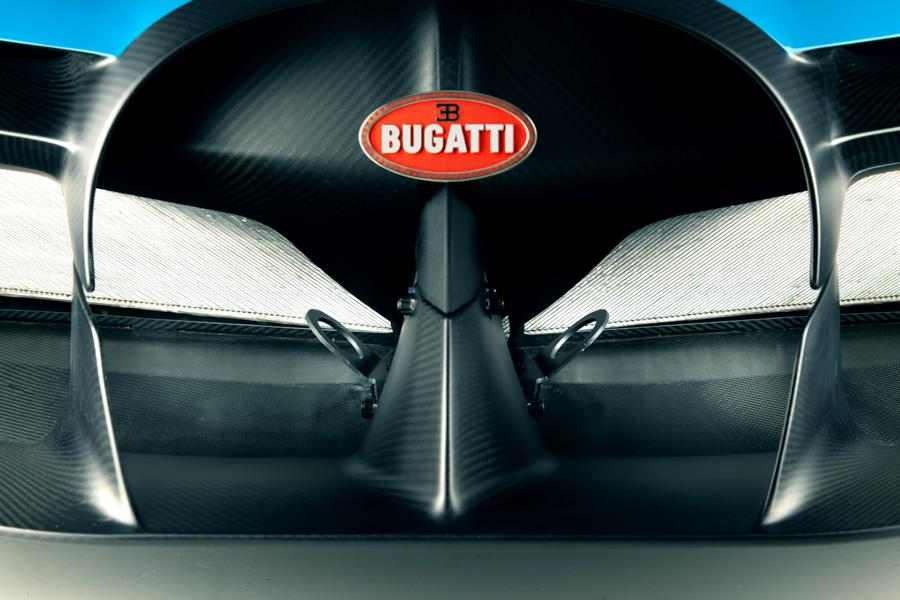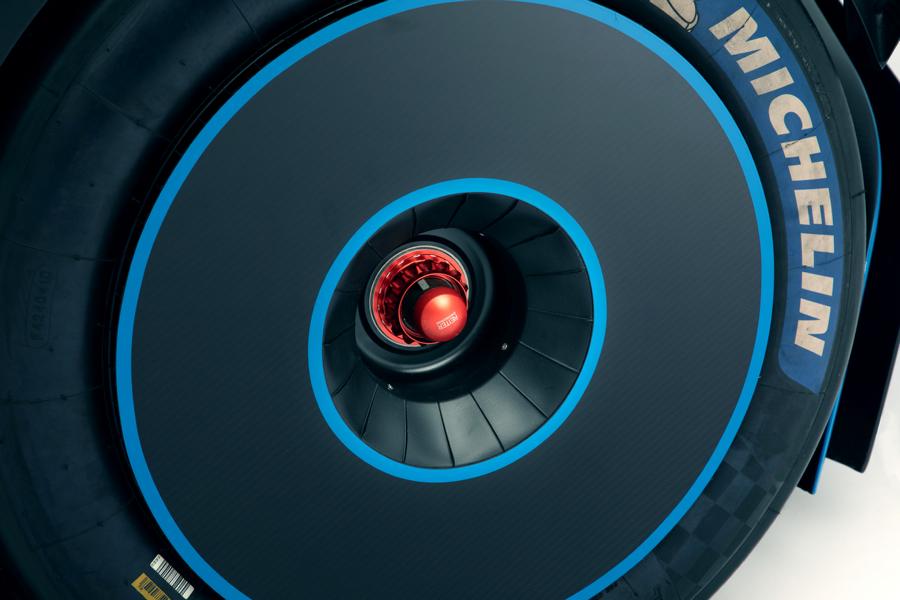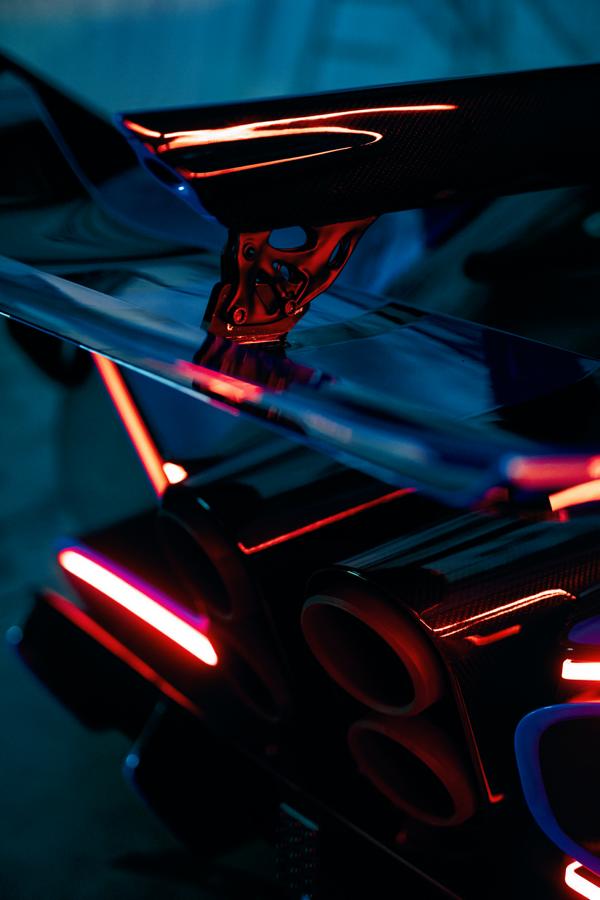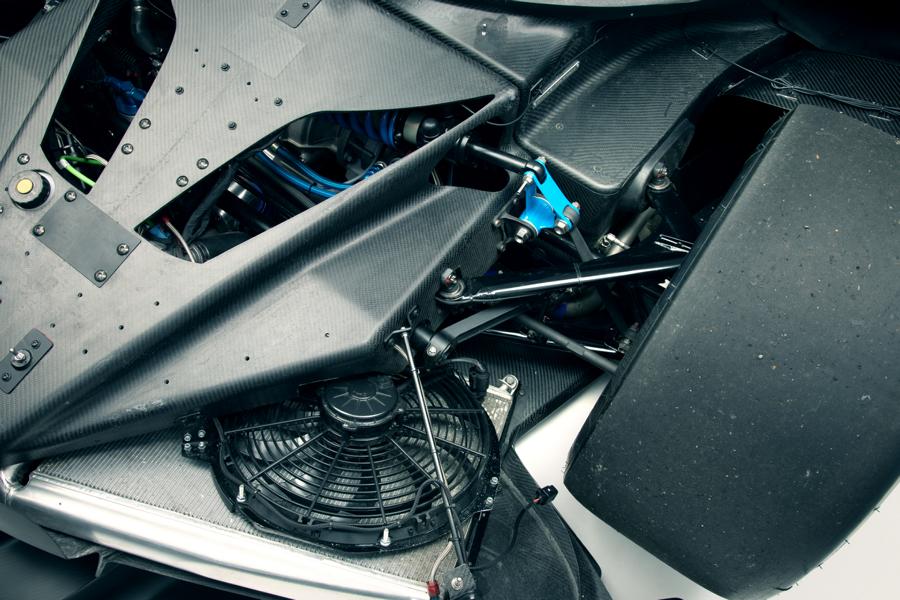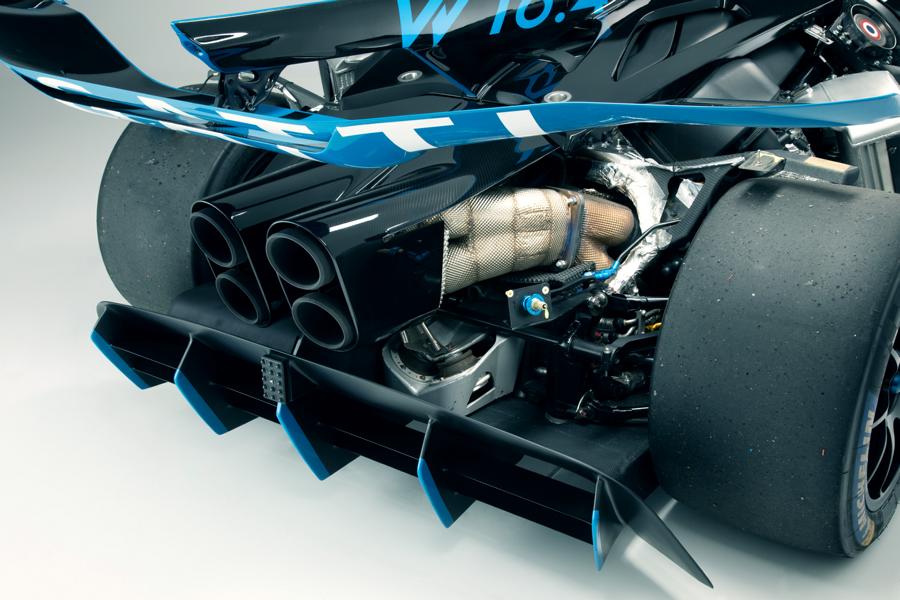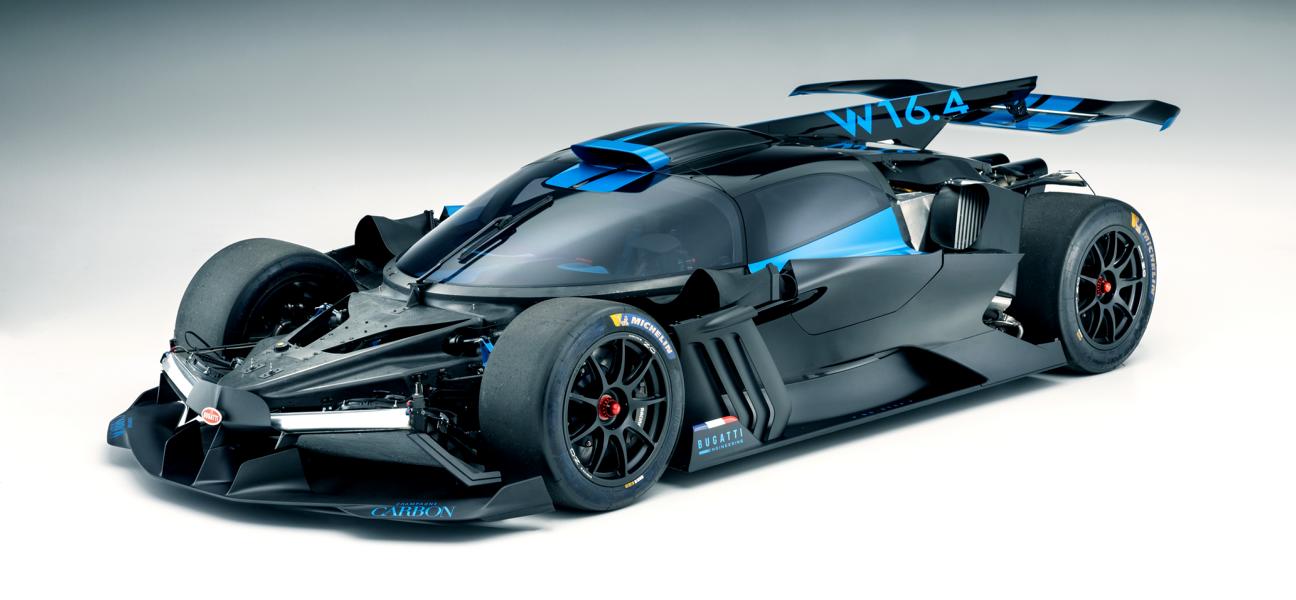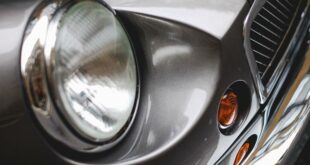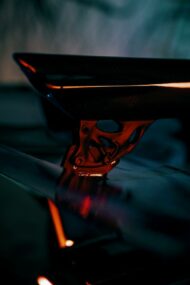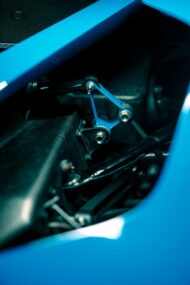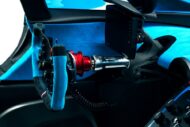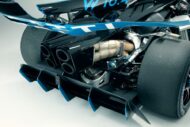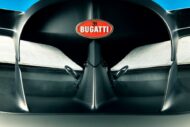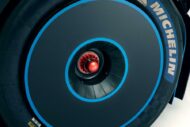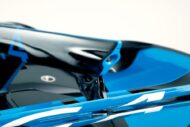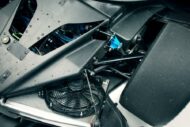Recently updated on January 25, 2021 at 10:26 am
Ultralight and strong like a reinforced concrete pillar. With a newly developed 3D print push rod, a pressure-loaded coupling rod in the chassis area, the Bugatti engineers are once again presenting their expertise in the field of technical innovations. With a dead weight of only 100 grams, the component can transmit forces of up to 3,5 tons. This is made possible by a titanium hollow structure with an internal supporting vault. Henrik Hoppe, PhD student in the New Technologies department at Bugatti, has been developing innovative metallic materials and manufacturing processes since 2017. He wrote his master's thesis on a calculation method for a 3D-printed titanium brake caliper, which is 43 percent lighter than the already heavily weight-optimized Chiron series component with the same rigidity.
selective laser beam melting
"With the so-called selective laser beam melting, commonly also called 3D printing, new, hollow and internally stiffened, ultra-complex components can be produced that are very light and yet extremely stiff and high-strength. We are using these advantages for more and more components in our hyper sports cars“, Explains Hoppe. In his doctoral thesis, the industrial engineer goes one step further: Since a complete manufacturing process chain from the idea to the final processing costs a lot of time and money, he is developing a new system. With it, he recognizes the technological and economic potential of metallic 3D-printed functional components for automotive construction and can increase it through targeted measures. So far, such components have mostly only been used in the aerospace industry.
3D components with a complex bone structure
Bugatti regularly uses the innovative technology and refines the components with complex, three-dimensional structures. The French luxury automobile manufacturer builds the printed components like a bone structure using principles from bionics: thin-walled, hollow on the inside, with fine ramifications. And it is precisely in this way that the components acquire their enormous rigidity despite their low weight - and that with wall thicknesses of up to 0,4 millimeters. "We will continue to reduce the weight of our automobiles and at the same time increase their innovative content in all conceivable areas“, Explains Henrik Hoppe. From design to production and installation in the vehicle, the engineer designs and plans the individual steps and makes all the calculations. This also includes the profitability analysis during the creation. "Even if Bugatti has the highest quality requirements for materials, manufacturing processes and components, they have to pay off economically“, He adds.
Bugatti is a leader in 3D printing
Bugatti occupies the technological leadership in the field of metallic 3D printing: since its inception, the first cross-industry metal 3D printing functional component has been installed in the Chiron, a small high-pressure pump console with water flowing through it on the transmission oil tank. In 2018, the world's largest 3D-printed titanium component was presented with a titanium brake caliper. This was followed by the world's largest hybrid functional assembly made of 3D-printed titanium and wound carbon. "These components are extremely light, stable and durable and can therefore be used in series“, Says Frank Götzke, head of the New Technologies department at Bugatti.
The new materials and manufacturing processes are now being used in the Bugatti Bolide technology carrier, which celebrated its world premiere at the end of October 2020. "The bolide as an experimental vehicle in the form of a racing car is not a show car. It is an uncompromisingly ready-to-drive extract of all of Bugatti's technical knowledge. Bugatti enthusiasts will later find these future technologies in other vehicles too“, Says Frank Götzke.
Like the turbofans known from racing, radial compressors on the super-light magnesium forged wheels. They look like wheel covers, but they have several functions: They pump the air out of the wheel houses through the brakes and draw the warm air outside. This way, the turbo fans cool the brakes and minimize lift. In contrast to the known mono-material solutions, the Bolide components are hybrid structures. It consists of a 0,48 millimeter thin middle pot made of 3D-printed titanium and a 0,7 millimeter thin carbon plate with small inner wings that are also made of carbon. Bars with a width of 0,48 millimeters also increase the rigidity of the titanium middle pot, which weighs just 100 grams. This gives the individual 18 ¼ inch turbofan on the rear wheels (17 ¼ inch at the front) a total weight of less than 400 grams, which would not be possible with a mono-material solution due to the specific buckling and bending stiffness that cannot be achieved there.
325 grams hold 1,8 tons
Highly complex components from the 3D printer are also used in hidden places. Bugatti also prints a mounting bracket for the front wing, on which it can be installed in three different height positions, from titanium. Hollow on the inside and 0,7 millimeters thin-walled, the console can withstand aerodynamic downforce of up to 800 kilograms - with a dead weight of only 600 grams. The downforce of the rear wing, in turn, is up to 320 tons at 1,8 km / h , is introduced into the upper structural spider with the help of the carbon center fin of the bolide, which forms the upper end of the rear frame made of high-strength stainless steel. Inside this middle fin there is a laminated and printed titanium component in order to connect the wing, which is adjustable in angle by means of a coupling rod, to it. Despite its stability, it only weighs 325 grams. The engineers also use titanium to print the console for the steering column, which is equipped with an integrated instrument panel, the support collar for the steering column passage and the two air vents in the interior. All components are designed as lightweight hollow constructions and have wall thicknesses of 0,5 millimeters throughout.
The bolide has wheel guidance on both the front and rear axles by means of double wishbone kinematics. On the rear axle, the spring-damper elements are designed to be vertical, on the front axle they are arranged horizontally across the direction of travel. The springs are made of titanium and the dampers have an adjustment and a reservoir that is internal to the front axle dampers. In the case of the horizontal spring-damper elements of the front axle, the wheel contact forces are transferred to the lower wishbones via push rods and rockers with the aid of a linkage arranged directly next to the pivot bearings. The consoles that guide the rockers have a wall thickness of at least 0,4 millimeters and weigh only 95 grams each, while the rockers themselves weigh just under 195 grams. Since air flows through the front axle of the bolide completely, its kinematic components, in addition to the 3D-printed titanium components and the high-strength stainless steel wishbones, are extremely light and stiff and aerodynamically optimized. The tensile strength of this and all other 3D printing elements is 1.250 N / mm. "With a special, in-house developed heat treatment process, we achieve this high tensile strength with a high elongation at break of at least 19 percent“, Explains Götzke.
Coupling rod weighs only 100 grams
The developers are particularly proud of the bolide's push rods. "They introduce a force into the rocker that, depending on the maneuver, can weigh up to 3,5 tons. Due to the implementation of several ideas, they still weigh only as much as a bar of chocolate, namely 100 grams per piece“, Explains Henrik Hoppe. The Bugatti developers varied the wall thickness of the thin-walled hollow rods for the first time. It increases towards the middle and then decreases again, so it is optimally adapted to the respective local load. Like a human bone, the component has an internal structure. This special structure was recently applied for as a patent.
With the exhaust tailpipe trim, a hybrid component made from 3D-printed titanium and ceramic, Bugatti has reduced the weight by around half compared to the already weight-optimized titanium tailpipe trims known from the series. The component, which is more than 280 millimeters long and has a wall thickness of only 0,5 millimeters throughout, weighs less than 750 grams. Since ceramic is a much poorer conductor of heat than titanium, Bugatti implemented for the first time special ceramic elements that are embedded in the titanium housing Center the cover to the carbon outer skin - so the outer skin is not damaged even at high exhaust gas temperatures. This heat shield is also supported by an integrated Venturi nozzle: fresh air is entrained when the hot exhaust gases enter the tailpipe cover and forms a cold air jacket around the hot exhaust gas flow. Taken together, an invention that Bugatti filed for protection with the patent office.
Light components in the bolide
A few months ago, Bugatti presented an extraordinary technological concept with the racetrack-oriented hyper sports car Bolide. The iconic 8,0-liter W16 with up to 1.850 hp drives a vehicle that weighs only 1.240 kilograms. This ensures an unbelievable power-to-weight ratio of 0,67 kg / PS, a top speed of over 500 km / h, perfect handling and maximum agility. "The multitude of technological highlights makes the bolide so special. But they can also be transferred to production vehicles. We are developing and working on this, because Bugatti has stood for its impressive innovations for over 110 years - and it will remain so in the future“, Says Frank Götzke.
Of course that had not happened yet!
tuningblog has countless other articles on the subject of car and auto tuning in stock. Do you want to see them all? Just click HERE and look around. In part, we would like to provide you with news but also off the tuning. In our category Tips, products, information & Co We have reviews of car or accessories manufacturers, new ones Tuning Wiki Terms or one or the other Leak veröffentlicht. Following an excerpt of the last articles:
|
Alpine F1 driver Esteban Ocon with Alpine A110S for the Rallye Monte-Carlo 2021! |
Bugatti prints 3D perfection
"Tuningblog.eu" - we keep you up to date on the subject of car tuning and car styling with our tuning magazine and we present you the latest tuned vehicles from all over the world every day. It's best to subscribe to ours Feed and will automatically be informed as soon as there is something new about this post, and of course also to all other contributions.
 tuningblog.eu Your magazine about tuning the car
tuningblog.eu Your magazine about tuning the car
